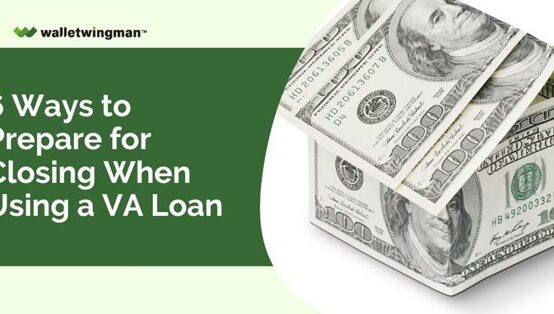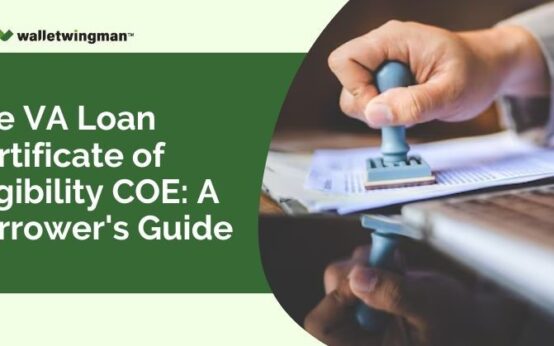What is the average loan amount for a VA home loan in 2024? Which states have the highest volume of VA loans? Those are just two of the questions we can answer by reviewing data published recently by the U.S. Department of Veterans Affairs.
Average VA Loan Amount Among Home Buyers

Toward the end of each year, the Department of Veterans Affairs publishes a variety of VA home loan statistics covering the previous fiscal year.
They recently published statistics relating to VA loan volume and amounts for fiscal year 2024. That report gives us the most recent snapshot of mortgage lending activity in counties and states all across the U.S.
In 2024, the average VA loan size for home buyers nationwide is $766,550.
As you might already know, home buyers using VA loans are able to finance up to 100% of the purchase price. This means they can avoid the down payment altogether.
In the majority of the continental United States, the 2024 conforming loan limit may reach $1,149,825 in particularly expensive real estate regions, an increase from $1,089,300 in 2023.
However, VA loan limitations are not a maximum or restriction on loan amounts. When veterans get their entire entitlement, they are not required to make a down payment and can obtain as much as a lender is prepared to provide.
Veterans who have defaulted on a prior VA loan or who have one or more ongoing VA loans may face constraints, which can partially affect their VA loan application status.
States With the Highest Average Mortgage Amounts
The highest cost of mortgage amounts in the United States has significantly improved over the past year. Here are the four states (plus one district) with the largest average mortgage size over the past year or so:
- Hawaii: $837,324
- California: $743,362
- Massachusetts: $587,875
- Washington: $577,353
- Colorado: $543,143
At the other end of the pricing spectrum, the states with the lowest average mortgage amount were Louisiana, Arkansas, Oklahoma, Mississippi, and West Virginia (in that order). These states have relatively low home prices, especially when compared to places like Hawaii, California, and Washington, D.C.

Volume: Total Number of VA Loans Generated
During the previous fiscal year, a grand total of 400,692 VA loans were generated nationwide. Most of those were purchase loans used by home buyers (320,272), with mortgage refinancing activity making up the rest.
The increased number of VA loans is clearly evident as the top five states for VA loan volume during FY 2023 were:
- Texas: 43,850
- Florida: 40,301
- North Carolina: 24,519
- Virginia: 24,254
- Georgia: 22,489
As you might have guessed, all of these states have a relatively high number of military bases and, therefore, a large military population. Since the VA loan program is generally limited to military members and veterans, it makes sense that these states would also have the highest VA loan volume.
Surprisingly, California came in at #6 in terms of volume, with 19,744 VA loans made during the past year. California has the largest general population of any state in the country and also the highest number of military personnel. So, it usually ranks at the top in terms of VA loan volume.
It’s possible that the real estate market cooldown that affected the U.S. through the first half of 2023 had an even more “chilling” effect on California. But we’re speculating here.

Top Metros: San Antonio, Phoenix, and El Paso
In terms of total VA loan volume, the San Antonio metropolitan area led the nation over the past year. Bexar County, Texas (which makes up most of the San Antonio metro area) had 7,090 VA loans during 2023. That was more than any other U.S. county.
Here are the top five U.S. counties with the most VA loan volume, along with their corresponding metropolitan areas:
- Bexar County, TX (San Antonio area): 7,090
- Maricopa County, AZ (Phoenix area): 6,021
- El Paso County, CO (Colorado Springs area): 5,214
- Clark County, NV (Las Vegas area): 4,674
- San Diego County, CA (San Diego metro): 4,019
All of these metro areas have a pretty heavy military footprint in terms of bases and personnel. They also tend to attract a lot of veterans who have served in the past. This accounts for the relatively high volume of VA loans in these areas.
Statistics Relating to the VA Refinancing Program
Homeowners who currently have a VA loan are eligible to participate in the VA’s Interest Rate Reduction Refinance Loan (IRRRL) program. Also known as a “VA Streamline Refinance,” this program allows homeowners to refinance at a lower interest rate, thereby reducing the size of their monthly payments.
It’s referred to as a “streamlined” refinance because it reduces paperwork and does not require a home appraisal like most refinance loans.
The present economic situation might make it a fantastic moment for many military homeowners to take advantage of the many benefits available in a VA refinance, with mortgage interest rates falling below 7% for the first time since August. This makes it the best time to apply for a VA loan application.
Borrowers can evaluate the equity in their property and spend it as cash using the second well-liked alternative, which is called cash-out refinancing. Any homeowner who qualifies as a veteran is eligible for this kind of refinance, regardless of whether they have a conventional, FHA, or USDA loan.
The increased VA loan application timeline can be attributed to the COVID-19 outbreak, which has promoted online applications. Prior to 2020, many veterans often wondered how to apply for a VA loan; however, online accessibility has made it easier to apply for a loan application through remote methods.
However, to avail of these programs, you must keep all of your required VA loan application documents ready for evaluation.
These documents are required to verify your military and personal details and serve as collateral. The required documents are:
1. Military Service-Related Documents
You are required to collect your military service-related documents. Lenders will want to see that your application meets all the necessary service-related requirements.
2. Certificate of Eligibility (COE)
A VA loan requires specific paperwork, and one of the most crucial is your Certificate of Eligibility. Your COE confirms that you are eligible for a VA loan based on your military service.
Getting a COE straight from your VA-approved lender is the most straightforward route. You can also apply for COE by mail using Form 26-1880 or online via the eBenefits site.
3. DD-214 Form
When you are released from active service in the military, you will obtain a document called a DD-214 Form, Certificate of Release or Discharge From Active service. It could be necessary for you to have the Certificate of Eligibility.
To expedite the application process, certain lenders could require surviving spouses to receive the DD-214 form of the dead Veteran.
4. Disability Award Letter (if applicable)
Veterans receiving sickness or injury benefits that happened while they were on active service are eligible to receive tax-free VA disability payments. To verify your income or work status for a VA loan, you will need to present a VA disability compensation letter as proof that you are a beneficiary of disability compensation.
5. Proof of Identity
Identification documentation is always required regardless of your situation or the kind of loan you’re requesting. Generally, a copy of your passport, driver’s license, or official identification from the state will be required.
6. Documentation of Employment and Income
Your evidence of income and employment is the next piece of paperwork needed for a VA loan. Before approving your mortgage, lenders and the VA will need to know this to assess your affordability.
7. W-2 Statements
Regarding your income, VA lenders like to see a stable work history in addition to your current salary. While working at the same firm for a few years can be beneficial, any job history—regardless of where you’ve worked—is crucial.

A Slow Year for Mortgage Lending
In response to the COVID-19 pandemic, financial institutions have tightened their lending guidelines. It is not unusual as financial institutions—lenders in particular—tend to become risk-averse during times of crisis.
Historical data indicates that the volume of VA mortgage loans was low in the fiscal year 2023. In general, the year was slow for the real estate market.
This stagnant growth has been mostly attributed to rising mortgage rates. In 2022 alone, the average mortgage rate on a 30-year fixed mortgage loan nationwide doubled. Consequently, there was a downturn in mortgage lending activity and a general cooling trend in the real estate market.
You can see this clearly when looking at total VA loan volume for the past few years:
- 2020: 1,246,815
- 2021: 1,441,745
- 2022: 746,091
- 2023: 400,692
We are seeing two extremes within these numbers.
Firstly, the amount of VA home loans was exceptional in 2021. At that time, the global pandemic caused a jump in home-buying activity across the country, which in turn caused a spike in mortgage loan origination.
On the other hand, 2023 was among the least active years for VA loans in history. This resulted from the previously noted decline in the property market and higher mortgage rates.
So, there you have them, the most interesting VA loan statistics for fiscal year 2024! Let’s wait and watch what 2024 holds in terms of VA loans.


 6 Ways to Prepare for Closing When Using a VA Loan
6 Ways to Prepare for Closing When Using a VA Loan  The VA Loan Certificate of Eligibility (COE): A Borrower’s Guide
The VA Loan Certificate of Eligibility (COE): A Borrower’s Guide  How to Apply for a VA Loan: A Step-by-Step Guide for Borrowers
How to Apply for a VA Loan: A Step-by-Step Guide for Borrowers 